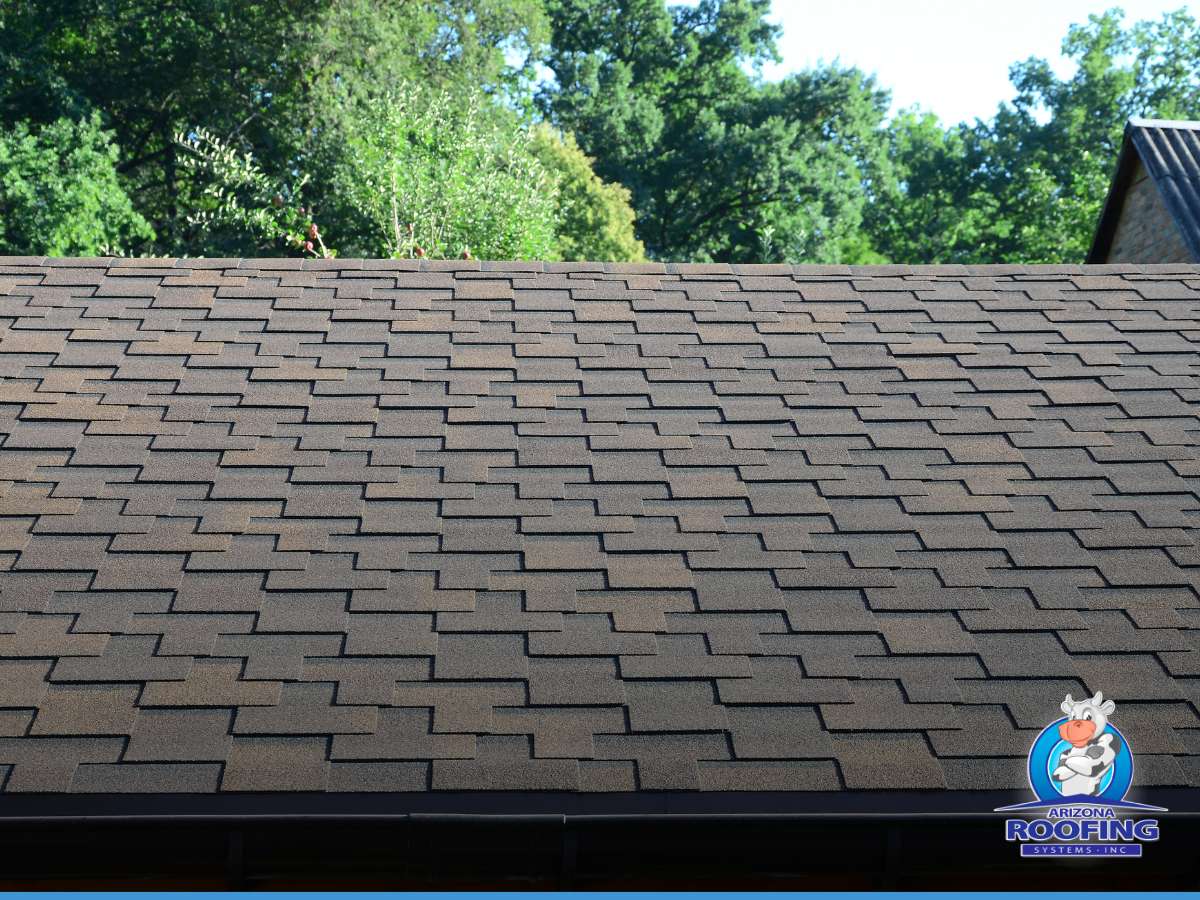Key Benefits of switching roofing materials: Boost Your Home’s Appearance, Efficiency & Functionality
Switching from a tile roof to an asphalt shingle roof is a smart choice for many homeowners seeking a more cost-effective and durable option. If you’re planning a roof installation for your home, this conversion can offer long-term benefits for both your home’s appearance, energy efficiency, and overall functionality.
Converting a tile roof to an asphalt shingle roof involves several important factors. We’ll explore the benefits and considerations to help you make an informed decision.
Understanding The Need For a Roof Replacement
When it comes to roof replacements, homeowners are often faced with a difficult decision: should they keep their current roofing material or explore other options? This is particularly true when considering a tile-to-shingle conversion, which is common in places like Arizona, where tile roofs are prevalent. However, switching roofing materials involves weighing the pros and cons of the available choices.
Several factors typically lead homeowners to consider replacing their roofs:
- Age of the Roof: Over time, roofs naturally wear down, and older materials may no longer perform as effectively.
- Damage: Missing or cracked tiles, water leaks, or weather damage can be signs that it’s time for a replacement.
- Energy Efficiency: Older roofs can lose their insulating properties, leading to higher energy bills.
Aging roofs can develop visible signs of wear, such as cracks or missing tiles, which might result in water leaks. If not addressed quickly, these issues can cause more extensive damage to the home’s structure. In some situations, emergency roof repair may be necessary to mitigate immediate risks, such as leaks or storm damage.
Roofs with deteriorated materials may also lose their energy efficiency, making it harder to maintain comfortable indoor temperatures. As a result, homeowners may face higher heating and cooling costs.
Why Consider a Tile-To-Shingle Conversion?
Switching from a tile roof to an asphalt shingle roof can be a beneficial move for various reasons. Here are some of the most compelling factors to consider:
- Cost Savings: Asphalt shingles are typically more affordable than tile, both in terms of materials and installation.
- Lower Maintenance: Shingles are easier to replace or repair than tile, which can be fragile and prone to cracking.
- Lightweight Material: Asphalt shingles are much lighter than tile, which reduces the strain on your home’s structure.
- Enhanced Weather Resistance: Modern asphalt shingles are designed to resist extreme weather, including high winds and intense heat, making them ideal for the Arizona climate.
- Versatile Aesthetic Options: Asphalt shingles come in various colors and textures, giving homeowners the flexibility to match the roofing style to the overall look of their home.
These factors make asphalt shingles a popular option for homeowners considering a roof replacement, whether they want to update the look of their home or reduce ongoing roof maintenance costs.
Structural Considerations
Before starting the conversion, it’s important to evaluate the structural aspects of your home. Since tile roofs are significantly heavier than asphalt shingles, removing them may require adjustments to maintain proper weight distribution. A roofing company can inspect the existing roof deck and determine whether reinforcements are needed.
Comply With Local Building Codes & Regulations
Homeowners should always check with their local building department and homeowners’ association (HOA) before making significant roofing changes. Some key factors to consider include:
- Permit requirements for roof replacement.
- Fire and wind resistance standards for asphalt shingles.
- HOA restrictions regarding roof materials and colors.
Ensuring compliance with these regulations will prevent fines and ensure a smooth installation process.
How Is The Conversion Process?
Converting a tile roof to asphalt shingles requires careful planning and professional execution. This process involves more than simply removing tiles and replacing them with shingles—it ensures the new roof meets structural and safety standards while providing long-term durability. Homeowners should work with experienced roofing contractors to guarantee high-quality results.
Installation Day
Once the necessary inspections and permits are in place, the tile removal process begins. This includes:
- Dismantling and disposing of old tiles.
- Inspecting and repairing the roof deck.
- Installing a durable underlayment to enhance waterproofing.
After the roof is prepped, the new asphalt shingles are installed in overlapping layers, ensuring proper protection and longevity.
How Long Does It Take To Replace a Tile Roof With a Shingle Roof?
The time required for a tile-to-shingle conversion depends on various factors, including roof size, structural adjustments, and weather conditions. A professional roofing contractor can provide a more accurate estimate based on your home’s specific needs.
Best Asphalt Shingles For Your Roof: Types, Durability & Aesthetic Options
When replacing a tile roof, selecting the right type of asphalt shingles is crucial. Homeowners can choose between several options based on their needs and preferences:
- Three-Tab Shingles: These are the most affordable option and are lightweight, making them easy to install. However, they have a shorter lifespan compared to other types.
- Architectural Shingles: Also known as dimensional shingles, these provide better durability and a more attractive look. They can mimic the appearance of wood or slate, adding visual appeal to your home.
- Impact-Resistant Shingles: Designed for areas prone to severe weather, these shingles offer extra protection against hail and strong winds. They are ideal for homeowners seeking long-term durability.
- Foam Roofing: Although not an asphalt shingle, foam roofing is an alternative that is often used in flat roofing systems. It provides excellent insulation and can be a good option for homeowners looking to improve energy efficiency. When used in combination with asphalt shingles, it may help enhance overall roof performance and longevity.
Key Differences Between Tile & Shingle Roofs
When considering a roof replacement, it’s important to understand how tile and asphalt shingle roofs differ. Here’s a comparison of some of the most important factors to help you make an informed decision:
- Cost: Tile roofs are generally more expensive due to the cost of materials and labor-intensive installation. Asphalt shingles offer a more budget-friendly option with lower upfront costs.
- Maintenance: Tile roofs require periodic inspections and repairs, especially if tiles crack or shift. Asphalt shingles, on the other hand, are easier and less costly to repair or replace.
- Weight: Tile is significantly heavier than asphalt shingles. This added weight requires a strong structural foundation. By switching to asphalt shingles, homeowners can reduce the load on their home’s framework.
- Installation Time: Installing a tile roof takes longer due to the complexity of placement and securing each tile. Asphalt shingles, however, can be installed more quickly, reducing labor costs and project duration.
- Lifespan: Tile roofs can last 50 years or more with proper maintenance. While asphalt shingles typically last between 20 and 30 years, modern high-quality shingles can offer extended durability.
Tips For Making An Informed Decision
When converting from a tile roof to asphalt shingles, making a well-informed decision is crucial. Here are some tips to ensure you choose the best approach for your home:
- Research & Compare Roofing Contractors: Look for licensed, insured professionals with experience in tile-to-shingle conversions.
- Consider Long-Term Costs: Compare the upfront investment of shingles versus tile and factor in future maintenance expenses.
- Check HOA Guidelines: Ensure your new roof complies with local aesthetic and material regulations.
- Schedule a Professional Inspection: Have a residential roofing contractor evaluate your roof’s condition before beginning the project.
- Choose the Right Shingle Type: Asphalt shingles come in various styles and quality levels, so selecting the right one for durability and appearance is essential.
- Ensure Proper Ventilation: Good attic ventilation is crucial to prevent moisture buildup and extend the life of asphalt shingles.
- Verify Warranty Coverage: Choose shingles with strong manufacturer warranties for added protection.
Why Convert a Tile Roof To Asphalt?
Converting a tile roof to an asphalt shingle roof is a decision many homeowners consider for several reasons. Whether it’s due to the challenges of maintenance, the desire for a more affordable solution, or the aesthetics, switching roofing materials can offer significant benefits.
Some common reasons why homeowners choose to convert their tile roof to asphalt shingles include:
- Cost-Effective Solution: Asphalt shingles are more affordable both in terms of material and installation costs compared to tile roofs, making it an attractive option for homeowners on a budget.
- Easier Maintenance: Tile roofs often require regular inspections and maintenance due to the fragility of the tiles. In contrast, asphalt shingles are simpler and cheaper to repair, requiring less frequent attention.
- Weight Considerations: Tile roofs are heavy and place a lot of strain on a home’s structure. By switching to asphalt shingles, homeowners can reduce this weight, which can help preserve the integrity of the home’s framework.
- Aesthetic Flexibility: Asphalt shingles come in various colors, styles, and textures, making it easier for homeowners to choose a design that matches their style preferences. This can help enhance curb appeal.
- Increased Durability: While tile roofs can last for decades, asphalt shingles are designed to withstand extreme weather conditions such as heat, wind, and rain, making them a practical option in areas with unpredictable weather patterns.
Important Factors In Tile-to-Shingle Conversion
Before committing to a tile-to-shingle conversion, there are important factors to consider to ensure the project runs smoothly and meets your needs. Consulting with a tile roofer company is a good first step to assess the feasibility of the project and determine if your home’s structure can support the new roof material.
- Structural Integrity: Tile roofs are heavy, and their replacement with asphalt shingles requires careful assessment of the home’s underlying structure. The roof framing may need reinforcement to support the lighter asphalt shingles and maintain structural integrity.
- Building Codes & Permits: Depending on your location, there may be specific building codes and local regulations regarding roof material changes. Always check with your local authorities to ensure the new roof complies with zoning laws and building codes.
- Climate Considerations: The local climate plays a role in determining whether a tile-to-shingle conversion is appropriate. Asphalt shingles are more suited to areas with extreme weather, while tile roofs might perform better in areas with consistent temperatures.
- Energy Efficiency: Tile roofs naturally offer more thermal insulation compared to asphalt shingles. If energy efficiency is a concern, you may need to consider additional insulation or upgraded ventilation when installing asphalt shingles to achieve the same level of energy performance.
- Warranty & Insurance: When making the conversion, it’s important to understand how it may affect your roof warranty and home insurance. Verify that the new roof comes with adequate manufacturer warranties, and discuss any potential changes with your insurance provider.
- Cost vs. Long-Term Savings: While asphalt shingles have lower initial costs, consider the long-term impact of maintenance and repairs. Choosing the right materials and contractors can help ensure you get the best value for your investment.
Upgrade Your Roof Today: Expert Tile-to-Shingle Conversion Services
Converting a tile roof to an asphalt shingle roof is a great way to improve cost efficiency, reduce maintenance, and enhance the appearance of your home. With proper planning, compliance with regulations, and assistance from a trusted Mesa roofing company, homeowners can ensure a smooth transition.
For expert guidance and professional roof installation, trust Arizona Roofing Systems. Contact us today to schedule a consultation and start your roof transformation with confidence!
ARIZONA ROOFING SYSTEMS
935 E. Sorenson
Mesa, AZ 85203
Tel: 480-218-8888
Email: [email protected]
Website: www.azroofingsystems.com

